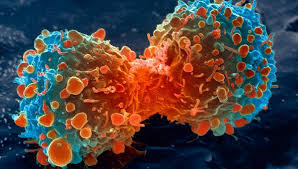 Abstract: Nagpur is known for its oranges and tigers. The city has also got a dubious distinction of having highest number of cancer patients in Maharashtra, government’s own figures revealed in the legislative assembly by Minister of state for medical education in December, 2013.
Abstract: Nagpur is known for its oranges and tigers. The city has also got a dubious distinction of having highest number of cancer patients in Maharashtra, government’s own figures revealed in the legislative assembly by Minister of state for medical education in December, 2013.
Introduction
Cancer belongs to a group of disorders which have encroached upon every strata of the society, rich or poor, urban or rural. In fact in India we have certain geographical areas that can very well be designated as “cancer zones or belts”, where most of the population is afflicted with this dreaded disease. Several pockets around Nagpur where we practice have such “Cancer zones” and thus the inflow of cancer patients in the city of Nagpur is constant or rather on the perpetual rise. No age is immune from this monster. This scourge has become a pandemic and it ultimate itself into a distressing state and death of those it affects. In order to manage patients inflicted with cancer, in homoeopathy we have a host of remedies indicated in different stages of the ailment.
At the Academy, we divide all our cases into Case Types as follows:
Case Type I – Natural curable cases
There is clear sickness evolution present in the patient, having totality of symptoms, reversible pathology, few or no secondary symptoms. The similimum can be selected on the basis of tendencies and diathesis.
Case Type II – Incurable cases
Patient has already developed gross pathological changes, irreversible pathology, disease symptom, secondary symptom, elimination is less. In this
case, physicians construct pathological totality to give palliative treatment.
Case Type III – One-sided cases
The patient is difficult to cure because there is no complete symptoms, no modalities and recurrent. Nosode should be prescribed on the basis of family history and personal history.
Case Type IV – Settled cases
Patient with no or very less symptoms due to allopathic ‘cure’ wants to stop or decrease doses of allopathic drugs or to treat the side effect of drugs.
Case Type V – Mixed case
Multiple types of symptoms and has history of taking all sorts of treatments.
So in the above context we can divide the scope and limitations of homoeopathy for cancer under 3 major headings:
1. Cancerous State
2. Cancer Disease proper
3. Cancer and its Complications
All these stages are managed by individual approaches.
1.Cancerous State: Cancer as a sickness never develops suddenly. It is always a progressive phenomenon which initiates with psora and ends in sycosis. Patients belonging to this stage may be grouped under cancerous diathesis – hence Case Type I. Here the patients have may have one of the prominent signals like recurrent cervical erosion in a female, or leucoplakia, or a chronic non-healing ulcer, a breast lump or proliferative mastopathy, Ulcerative colitis or Crohn’s disease, Kraurosis vulvae, papillomatosis of the bladder, intestinal polyposis, chronic gastric ulcer and seborrhoeic keratosis or even a cancer in situ, etc. But along with this there are a lot of physical and /or mental generals in the case, enough to identify a constitutional similimum. Here the disorder is in the functional stage and the pathology is reversible. Psora is predominant. If a constitutional treatment is done then the entire syndrome can be nipped in the bud.
One can hope to eradicate the tendency to malignancy in this stage. An individual who may not be having cancer but has a very strong family history of cancer can also be grouped under this category. There are times when a constitutional remedy cannot be selected. Then based on the family history, the latter individual can be given a dose of Carcinocin or a nosode to break the miasmatic stigma and thus the tendency for malignancy.
2.Cancer Disease Proper: In this category we may have patients presenting again in various stages.
Primary case presenting with cancer who has not taken any therapy: In such a case, the ideal method is to take the complete case, especially focusing on the “ailment from” and select a constitutional remedy. Administer it in proper potency and repetition. I remember a case of a young male aged 22 years who presented with a progressive increasing right breast mass since 2 months. On investigation it was confirmed to be Schirrous carcinoma breast. After an exhaustive history we gave him Staphysagria (ailments from insults) followed by his constitutional drug Calcarea carb in ascending potencies. It took around 11 months for the mass to disappear. It has been 13 years and he is married and well settled.
Case presenting after Surgery / Chemotherapy / Radiotherapy: These cases belong to Case Type IV (Settled) or V (Mixed). In such cases homoeopathy may or may not initiate a curative process. We have to remember that “Pathology is the center of inhibition”. Under homoeopathic treatment the pathology does not grow and for years may remain static. There may be elimination in the form of discharges and ulcers can heal.
3.Cancer and Its Complications: This is the tertiary stage of sycosis or syphilis, where cure is a farfetched goal. These patients belong to Case Type II – incurable cases. Here the only aim is to palliate the most prominent symptom – which often is pain or a discharge or bleeding, etc. Since there are only common symptoms and hardly any generals, the use of so called organ based remedies or tinctures can be taken help of. Auxiliary measures should be used to the fullest.
This dreaded disease if approached properly with homoeopathy can definitely reap rich dividends.
Source: The Homoeopathic Heritage, January 2017





